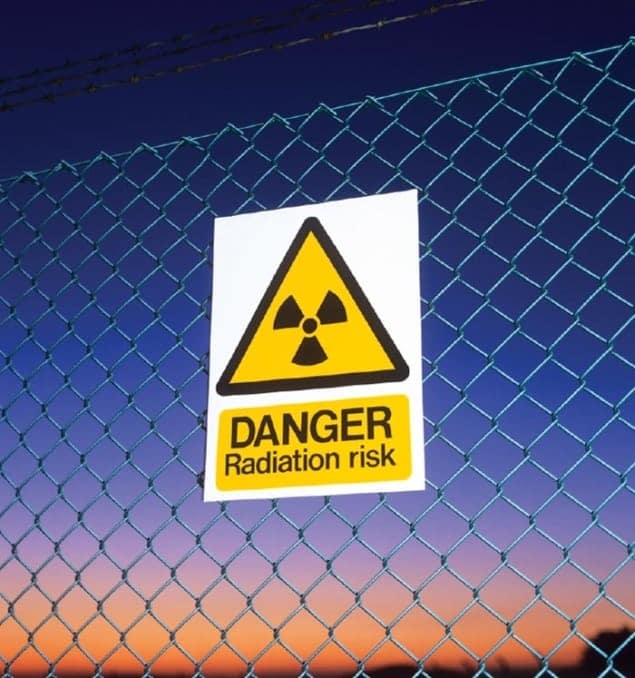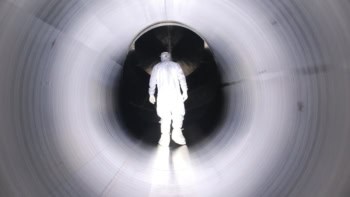The Road to Yucca Mountain: The Development of Radioactive Waste Policy in the United States
J Samuel Walker
2009 University of California Press
£24.95/$34.95 hb 240pp

Expeditions in search of a rainbow’s end never reach their goal. Efforts to solve the problem of nuclear-waste disposal have not had much success either – perhaps because they have been addressing questions the wrong way round. There are two basic challenges of waste disposal. The first is scientific: the waste must be kept somewhere out of harm’s way, where it does not incur major risks to current or future residents of the planet. The second is political: scientists must persuade and reassure the community as a whole that the waste is being handled, stored and disposed of safely. In The Road to Yucca Mountain, author J Samuel Walker gives a historical account of the politics of nuclear waste from the early 1940s to mid-2008. Despite the title, however, the waste-storage project at Yucca Mountain, Nevada, is barely mentioned until the last few pages. Instead, most of the book concerns earlier attempts to arrive at a waste policy. In particular, the machinations that accompanied initial proposals to bury high-level waste in salt mines in Kansas are described in some detail. These mines were supposed to be dry. But even before tests showed that water could transport material within the mined area, such geological questions had become rather irrelevant in the face of the strength of the political opposition.
Walker is the US Nuclear Regulatory Commission’s historian, and within his chosen remit his research is careful and thorough – witness the 35 pages of notes and references in a book where the main text covers only 186 pages. But his book has one great shortcoming: an almost total absence of science. In The Road to Yucca Mountain – as in the waste debate it describes – the science plays a secondary role compared with the interstate squabbling and the jockeying with the US government over where waste should be stored.
In some ways, this is a true reflection of the cut and thrust of the political story. In addition to the Kansas salt-mine debacle, Walker describes other federal initiatives that also foundered, as plans for test drilling in Michigan were aborted, and local objections were raised to sites in Louisiana, South Dakota and Vermont. Even in New Mexico, Washington and Nevada, where there was some public acceptance due to existing nuclear programmes, projects ran into serious local opposition.
Nonetheless, the book would have done a service if it had reflected on the scientific reasons why progress has been frustrated. The truth is that until recently, many important questions surrounding waste disposal could not be answered adequately. Some of these questions were biological. For most of the period after the Second World War, we did not understand the effect of radiation on life well enough to be sure what radiation levels were safe. Only in recent decades have the radiobiology and the epidemiology become sufficiently well established for us to be confident about the risks from low doses – whether acute, chronic or repeated.
This meant that in the earlier years the “experts” were not able to answer with confidence when pressed for firm reassurance on matters of radioactive waste. Politicians and activists pounced on this uncertainty. Consequently, a planned waste repository, though seen as “safe” in one decade, would be deemed “unsafe” before it could be built in the next. The tension that this created between experts and politicians led to claims of deception, which eroded mutual trust. By 1974 the political credibility of the US Atomic Energy Commission had fallen so low that President Gerald Ford disbanded it, dividing its responsibilities between the Nuclear Regulatory Commission and the Energy Research and Development Administration. However, as Walker records, these administrative changes were not enough to avoid the stalemate that then took place.
Now that the epidemiology of radiation is better understood, the most important decisions for nuclear experts concern the reprocessing of the waste and the need to keep it secure after disposal. It is widely acknowledged that nuclear waste should be placed where it is irrecoverable, thus reducing any chance of its use by terrorists. Many deep burial sites would provide natural security over the few hundred years needed – particularly if the waste is reprocessed, since reprocessing reduces both the volume of waste and its decay half-life. However, thanks to its association with the manufacture of weapons-grade fuel, reprocessing has had a bad press, and in 1977 President Jimmy Carter decided to defer it “indefinitely” – a serious backwards step for nuclear-waste disposal.
Ultimately, finding a solution to the nuclear-waste problem requires a degree of political confidence and trust that the right steps are being taken. In the past, these conditions have not been met, as Walker recounts all too clearly. Recently, however, scientists and policymakers have come under increased pressure to solve the problem, thanks to a need for the carbon-neutral baseload energy source that nuclear power provides. Any such solution will require a better appreciation of the science, widespread public re-education and more altruistic decision making.
In its scientifically superficial account, The Road to Yucca Mountain does not really face up to these underlying issues. Fortunately, history does not stop at the foot of the final page of any book. Since it was written, the future of Yucca Mountain and the ban on reprocessing (or “recycling”) have both been thrown into doubt by the new US administration. The matter of nuclear waste has already been on the table for more than 60 years, and its next chapter has yet to be written. But one thing is clear: if the science is put first, the problem can be solved.



